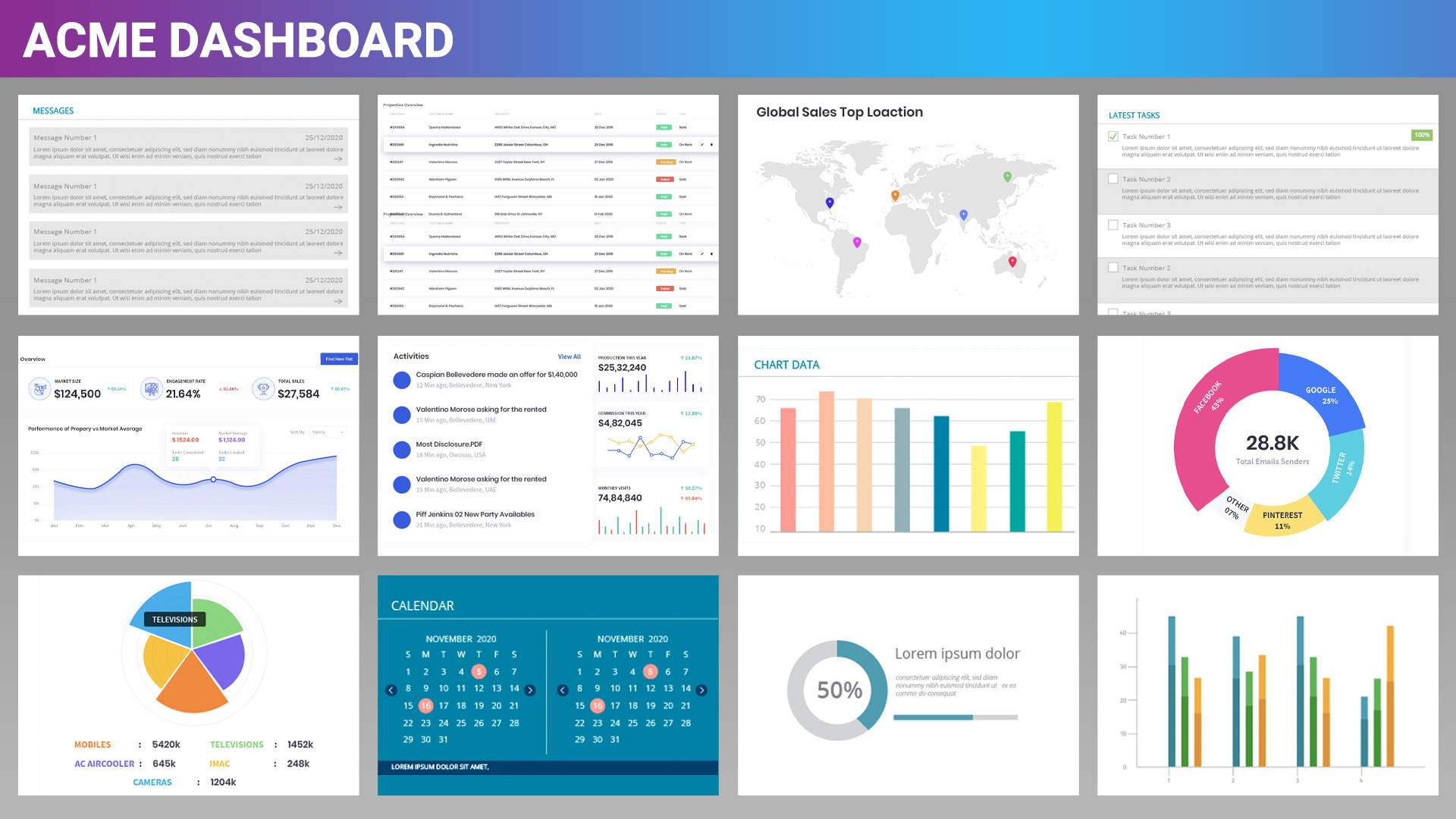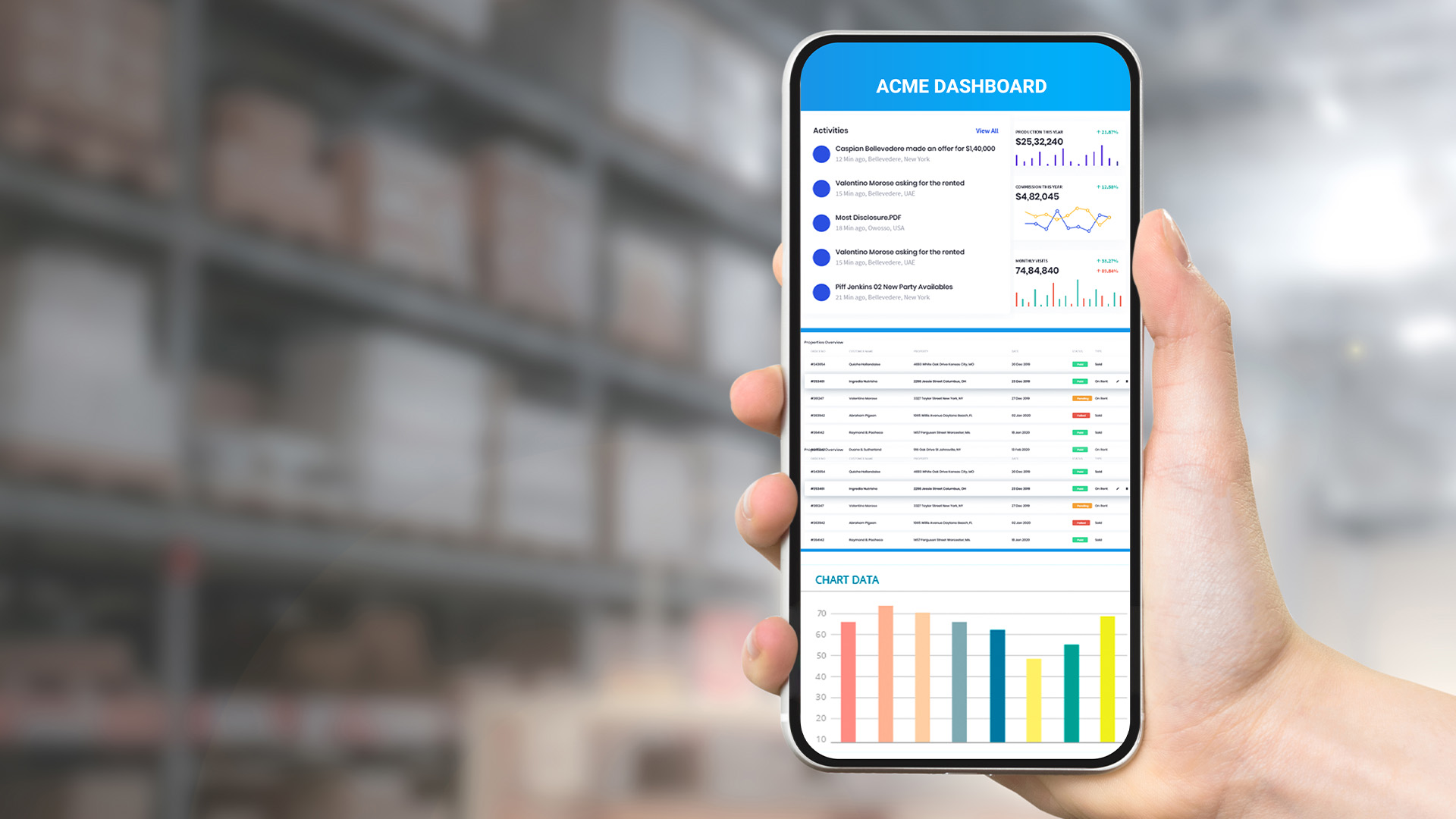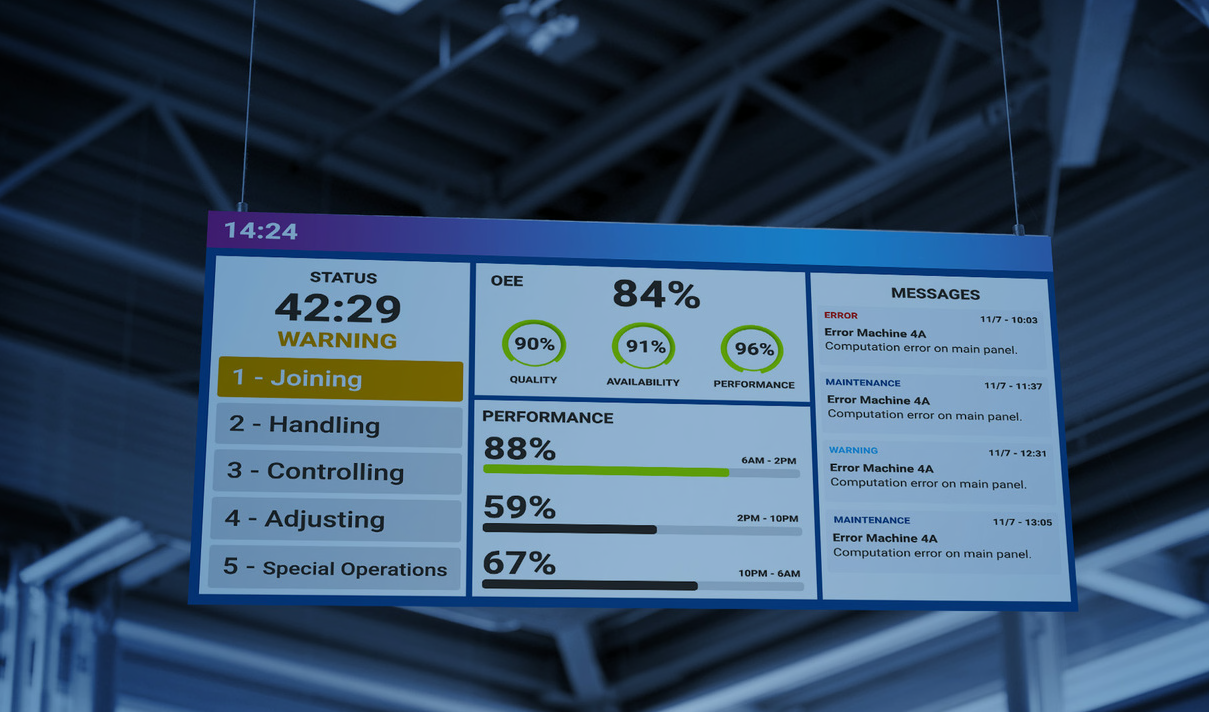By Guy Serwin
Lean manufacturing, often known as lean production or simply “Lean,” is a systematic approach focused on eliminating waste while maximizing value. Rooted in principles emphasizing efficiency, quality, and continuous improvement, lean manufacturing aims to deliver high-quality products or services with minimal resource utilization.
A pivotal aspect of lean manufacturing is the management of Key Performance Indicators (KPIs), which are the metrics assessing various production processes, such as quality, efficiency, and productivity. Production goals also hold a significant role in lean manufacturing. They are designed to optimize workflow, reduce downtime, and ensure efficient resource allocation, encompassing elements like cycle times, lead times, and product quality. Meeting these goals keeps the production process smooth and minimizes waste.
Visual Management: The Backbone of the 5 Lean Manufacturing Principles
Lean manufacturing is driven by the 5 Lean Principles that guide the entire production process, ensuring a streamlined, waste-free operation. But it is not merely a set of principles; it’s a philosophy that reshapes the way we approach production. At its core, lean manufacturing is guided by these five foundational principles:
- Defining Value from the Customer’s Perspective: This principle centers on understanding what the customer truly values in a product or service. It’s about focusing efforts on delivering exactly what the customer needs, eliminating anything that doesn’t contribute to that value.
- Mapping the Value Stream: Value stream mapping helps identify the end-to-end process of delivering a product or service. It pinpoints areas of waste and inefficiency, enabling improvements to be made.
- Creating Flow: Flow means ensuring that the work moves steadily through the production process. It’s about eliminating bottlenecks, delays, and interruptions, resulting in a more efficient operation.
- Establishing Pull: Instead of pushing products or services onto customers, lean manufacturing encourages the concept of “pull.” Products are produced or services provided based on actual customer demand, reducing excess inventory and waste.
- Striving for Perfection: lean manufacturing is a continuous improvement journey. It’s about striving for perfection in quality, efficiency, and customer satisfaction. Perfection may be an ideal, but the journey towards it leads to ongoing enhancements.
While these principles are the basis of lean manufacturing, the vital thread that ties them together is visual management. Visual management makes information and processes visible, creating an environment where everyone involved can quickly grasp the status of operations and identify issues. Visual cues, such as charts, graphs, displays, and alerts, serve as constant reminders of what’s happening and where improvements are needed.
How Digital Signage Benefits Lean Manufacturing
 We all know digital signage is all about using visual displays, such as screens and monitors, to communicate information. However, when incorporated into manufacturing, these displays become a powerful tool for making critical data and information instantly visible to everyone involved in the production process. It’s the modern solution to traditional visual management boards, taking lean practices to the next level.
We all know digital signage is all about using visual displays, such as screens and monitors, to communicate information. However, when incorporated into manufacturing, these displays become a powerful tool for making critical data and information instantly visible to everyone involved in the production process. It’s the modern solution to traditional visual management boards, taking lean practices to the next level.
The benefits of using digital signage in lean manufacturing are many fold. First and foremost, it ensures real-time visibility, a cornerstone of lean principles. Key Performance Indicators (KPIs), production goals, and process improvements can be displayed and updated instantly. This real-time aspect enhances the agility of decision-making, allowing teams to respond promptly to changes or disruptions. Digital signage also simplifies communication. It transcends language barriers, ensuring that information is clear and easily understandable.
Visualizing Key Performance Indicators (KPIs) in Real Time
Key Performance Indicators (KPIs) are the lifeblood of lean manufacturing, guiding teams toward peak efficiency and optimal performance. They serve as the compass in an ever-changing manufacturing landscape. KPIs provide clear, measurable insights into various facets of the production process, enabling organizations to gauge their progress and adherence to Lean principles.
Digital signage excels at turning raw KPI data into actionable insights. It makes complex performance metrics easily digestible. Commonly displayed KPIs might include:
- Overall Equipment Effectiveness (OEE): Measuring equipment utilization, OEE indicates how efficiently machines are running and where improvements can be made.
- Inventory Turns: This KPI shows how quickly inventory is replenished and sold, helping to prevent overstocking or stockouts.
- Production Lead Times: Displaying the time it takes to complete an order, which helps teams identify bottlenecks and streamline processes.
- Quality Metrics: Metrics like the number of defects or the percentage of products meeting quality standards.
One of the key advantages of digital signage is its ability to provide real-time KPI visualization. This feature is instrumental in lean manufacturing, where timely responses to changes can mean the difference between meeting production goals and falling behind. With digital signage, KPIs are not static numbers on a spreadsheet; they are dynamic, living data streams. When a production goal is met or a process improvement is made, the entire team can see it immediately.
Guiding Process Improvements with Digital Signage
 Continuous improvement is the essence of lean manufacturing, driving the quest for better, more efficient methods. This unwavering commitment empowers organizations to adapt to a changing manufacturing landscape, saving resources and reducing waste.
Continuous improvement is the essence of lean manufacturing, driving the quest for better, more efficient methods. This unwavering commitment empowers organizations to adapt to a changing manufacturing landscape, saving resources and reducing waste.
Lean manufacturing ‘s principles rest on continuous improvement, seeking to optimize processes, save resources, and enhance customer satisfaction. Teams regularly review and refine procedures to boost efficiency and quality.
Digital signage plays a crucial role in this journey by making information visible to all team members in real-time, exposing inefficiencies and bottlenecks. It highlights anomalies, prompting immediate action and ensuring swift issue resolution.
Digital signage can display a wide range of process improvements. For instance, it might spotlight:
- Reduction in Downtime: Displaying how the introduction of a preventive maintenance program has substantially reduced machine downtime.
- Streamlined Workflows: Showcasing how a new workflow design has reduced product lead times and increased production capacity.
- Enhanced Quality Control: Illustrating how the implementation of a more rigorous quality control process has resulted in fewer defects and improved product quality.
In this context, digital signage serves as a virtual showcase of the lean manufacturing ethos of continuous improvement. It’s a visual reminder that progress is always possible, and the journey toward perfection is never-ending.
The Lean Revolution Continues with Digital Signage
 The integration of digital signage in manufacturing revolutionizes efficiency and productivity. It provides real-time visibility, enhances communication, and fosters customized data usage, making lean manufacturing more effective and agile.
The integration of digital signage in manufacturing revolutionizes efficiency and productivity. It provides real-time visibility, enhances communication, and fosters customized data usage, making lean manufacturing more effective and agile.
Digital signage amplifies visual management’s impact by presenting key performance indicators (KPIs), production goals, and process improvements in a universally understandable format. It overcomes language barriers, encourages engagement, and highlights inefficiencies in real-time, streamlining continuous improvement.
Visual management, enriched by digital signage, serves as the foundation of lean manufacturing. It elevates understanding, aligns teams, and empowers decision-makers with clear insights. Embrace the power of digital signage with Korbyt. It is the gateway to a Lean revolution, offering the tools needed to transform manufacturing processes into more efficient, responsive, and visually inspiring operations.









